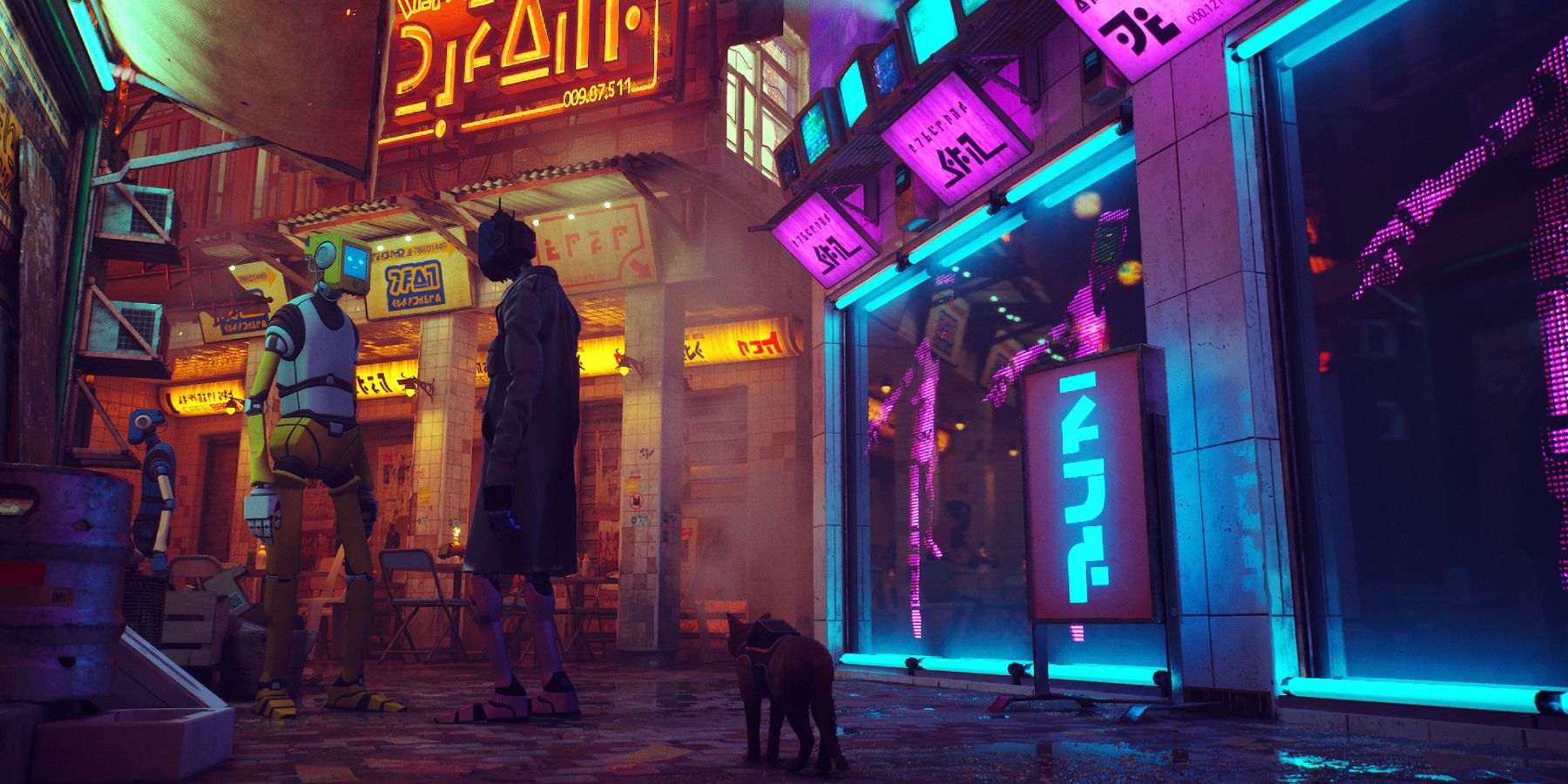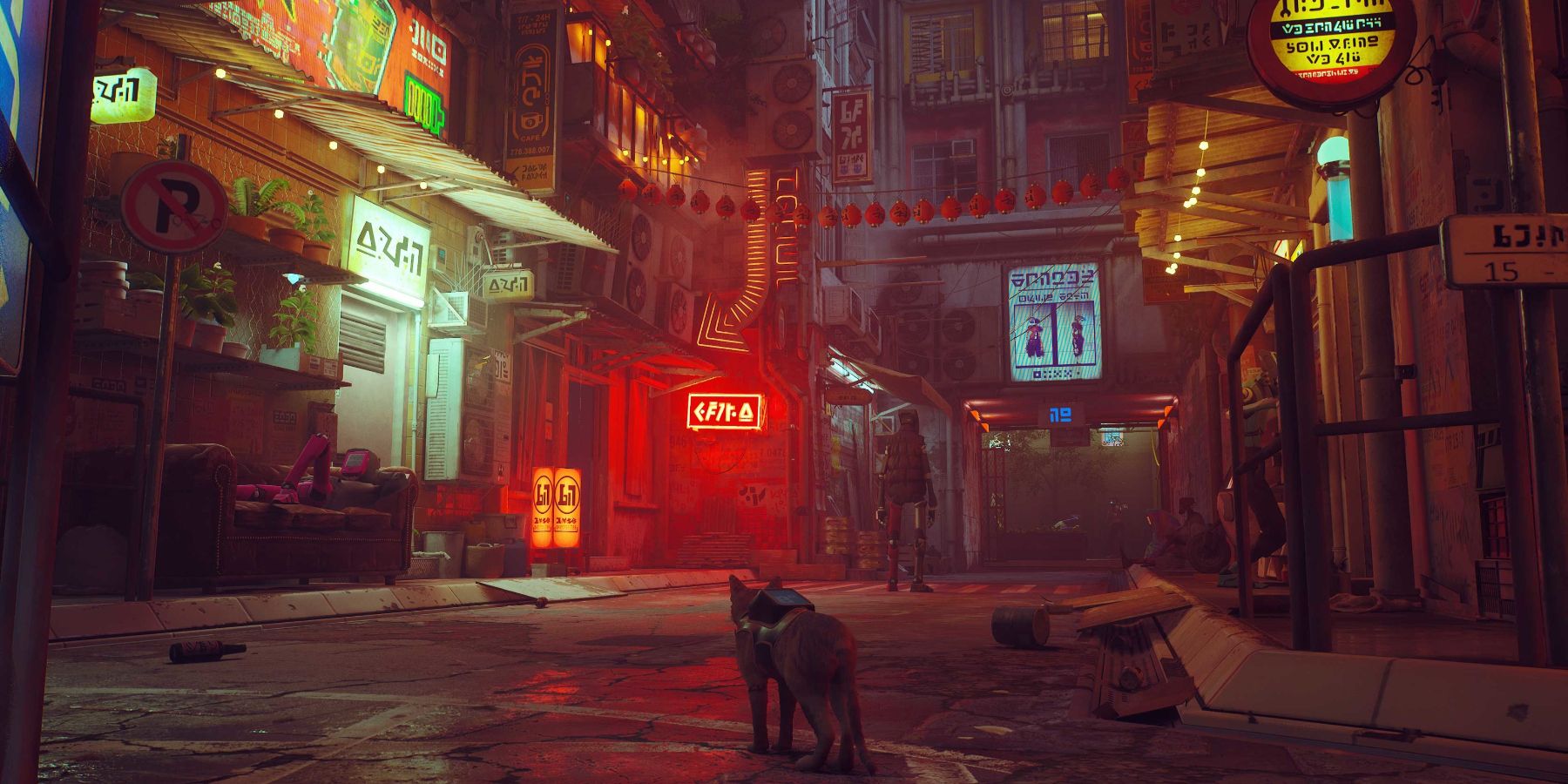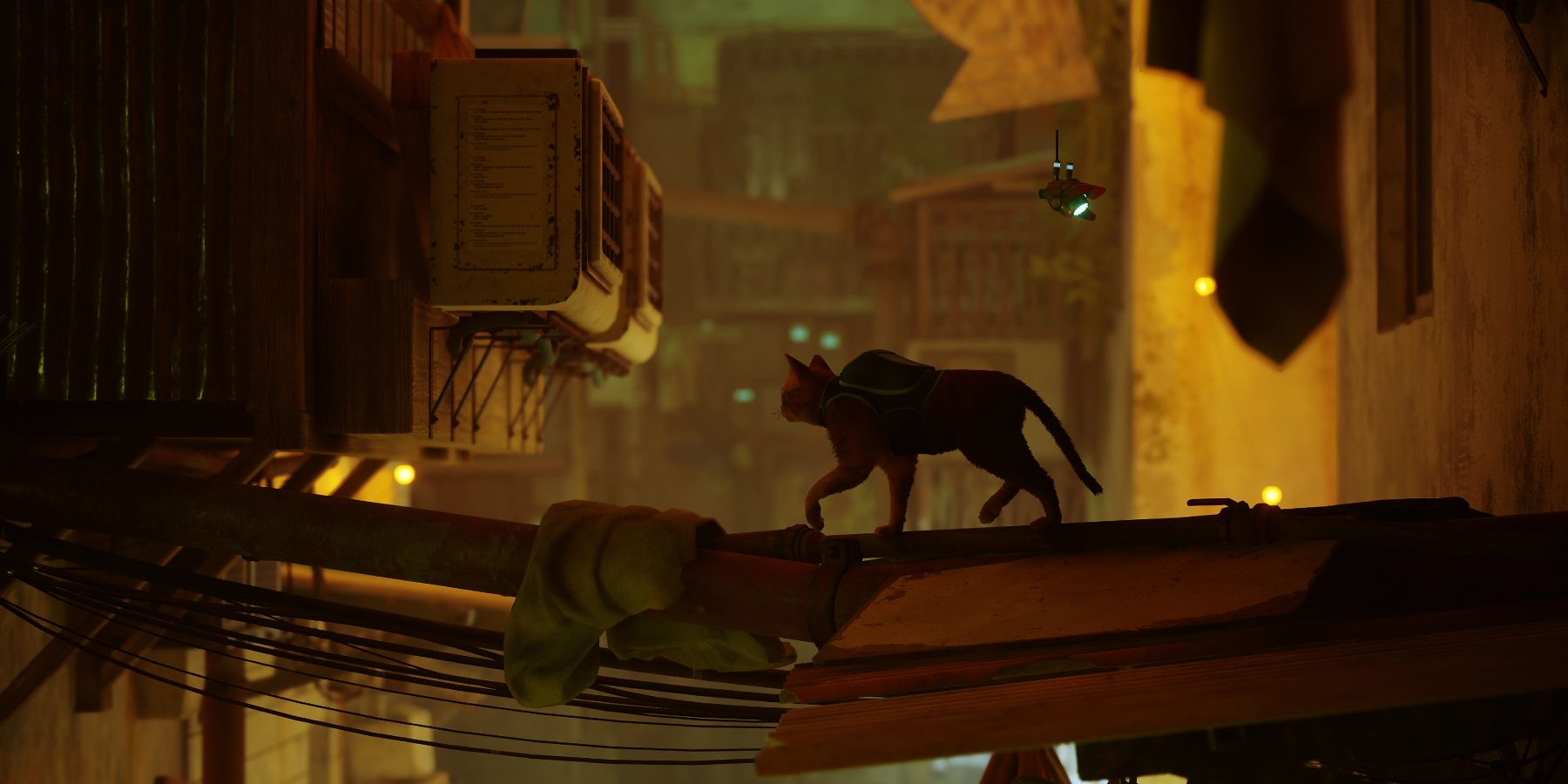With a 10 out of 10 on Steam, it is clear that Stray has made many fans. Created by the indie French game company, BlueTwelve Studio, the story explores a cyberpunk world through the eyes of an orange tabby cat. The game is loved not just for its cute feline protagonist, but for its gorgeous world, interesting robots, and sobering apocalyptic lore.
In fact, one of the greatest parts of the game was its location. The Walled City that players can explore is full of life in its skyscrapers, neon signs, tiny apartments, and alleyways. It makes the perfect playground for a cat. However, there is more to the city than meets the eye. It was actually inspired by a place that existed in real life. This place was the Kowloon Walled City in China, a place that was demolished in the 90s due to the quality of life and sanitary conditions being so poor.
How Kowloon Inspired Stray
According to an Inverse interview with Producer Swann Martin-Raget, the Kowloon Walled City was the source of fascination that inspired early development. Kowloon was known for its incredibly high density of people. In fact, Kowloon was the most densely populated place on Earth in its time. Its alleyways were thin, only reaching three to six feet wide with poor drainage and little room for light. Since the apartments in the city were so small, much of people's lives moved to the rooftops and caged balconies with clotheslines, trash, and TVs. Most of the buildings were 10 to 14 stories high.
Kowloon made the perfect blueprint for Stray, as the developers realized the architecture made itself into a fantastic cat playground. Cats can slip through alleyways, jump from balcony to balcony, and have tons of trash to play with. Looking at picture of Kowloon and then of Stray, the cities practically mirror each other. However, the backstory of Kowloon is quite different from the postapocalyptic Walled City of Stray.
The Story Of Kowloon
Originally, Kowloon was a Chinese military fort, but it became an urban settlement in the 1940s in the aftermath of World War 2. The city went through massive construction, reaching its maximum size in the late 70s. By the 90s, Kowloon had between 30 and 50 thousand residents squeezed into just 6.4 acres of land. For much of its existence, the city became infamously known for its crime and poor conditions. A single fire could destroy the lives of thousands and sunlight rarely even reached the ground at the city's lower levels. The city was also home to many unlicensed doctors and dentists who did not need to fear repercussions.
Due to its unique circumstance, the city had its own unique culture. The difficult living conditions made the community active in helping each other, especially when it came to childcare. Rooftops were used often as gathering places to play or work. Due to its crime and isolation, much of the communities were self-governing and reflective of anarchic urbanism. Unsurprisingly, the city did not last due to its poor conditions, and the thousands of citizens were compensated and evicted from Kowloon by the government. Today, what was once Kowloon is now a city park. The skyscrapers were torn down and replaced with plants, statues, and paths. Little remains of what was there when the city stood.
Since its destruction, Kowloon has been romanticized by dystopian fiction. Stray is far from the first piece of media to use Kowloon as a source of inspiration. Films like Brothers from the Walled City, Long Arm of the Law, Baraka, Re-cycle, Batman Begins, Crime Story, and Bloodsport all have scenes or totally take place in the city of Kowloon or a city/neighborhood based on its design.
Other video games that have been inspired by Kowloon include Shenmue 2, Stranglehold, Shadowrun: Hong Kong, Call of Duty: Black Ops, and Fear Effect. With the popularity of Stray, it is possible that more visions of Kowloon in the gaming world are in store for the future. It goes to show how much one place can inspire others, even places that are long gone.
Stray is available on PC, PS4, and PS5.
Source: Inverse



